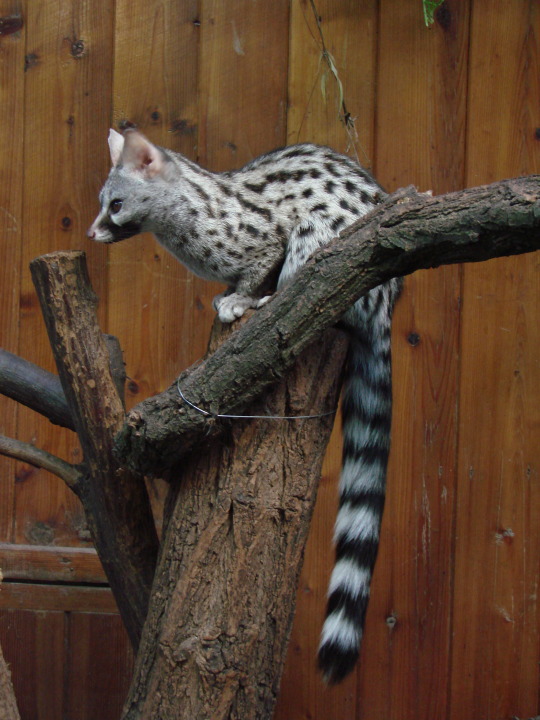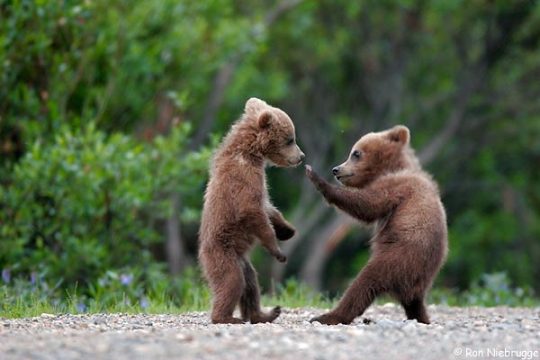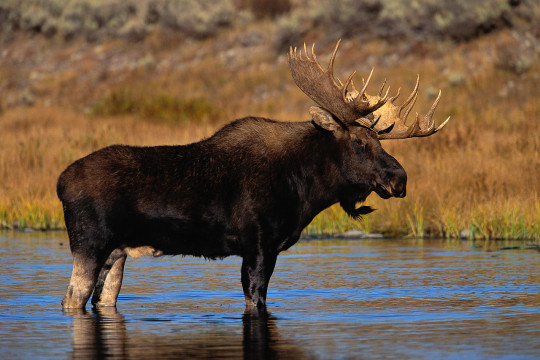I love animals, i love to research the fuck out of stuff. it's like a win, win situation right here.
Don't wanna be here? Send us removal request.
Photo



The Impala
The Impala is a medium sized african antelope. The impala lives in the savanna grasslands and woodlands, close to water.The impala inhabits savanna grasslands and woodlands close to water sources. It forages for things like grasses, forbs, dicots, monocots and foliage.
Sexually dimorphic, only the males have horns and are noticably larger than females.
4 notes
·
View notes
Photo



The Red Kangaroo
Native to Australia, the Red Kangaroo is the largest of all kangaroos, and the largest marsupial. Large mature males can reach a height of 5'9'' or 1.8 metres, though the largest confirmed sighting was of a male that reached 6'9'' or 2.1 metres and weighed 91 kgs or roughly 200 lbs.
They're relatively widespread, and can be found in most parts of the country.
Male kangaroos participate in 'boxing' which begins with two males arm wrestling and can lead up to them leaning back on stiff tails and kicking each other.
Though they look cute, Kangaroos are a dangerous animal and approaching one, even in a wildlife park is risky, a kick from a large male can both damage internal organs and tear skin and it's shorter fore paws can damage shoulders, chest and face.
(x) (x Slightly over-dramatised)
4 notes
·
View notes
Photo


The Orangutan
Native to the Borneo and Sumatran rainforests of Malaysia and Indonesia, this great ape is divided into two sub species. The Bornean Orangutan and the Sumatran Orangutan. Males and females differ in both appearance and size, with adult males having distinctive cheek pads and loud calls which they use to attract females.
Mostly solitary, the strongest bond is formed between a mother and her offspring which stays with her for the first two years of its life.
Orangutans have a diet that consists mostly of fruit, however, they will also eat honey, bark, insects and even birds eggs.
3 notes
·
View notes
Photo




The Leopard Seal
The leopard seal is the second biggest species of seal in the Antarctic. It is most common along the coast of Antarctica and most islands in the area, but can be found on the coasts of Southern Australia, Tasmania, New Zealand, Lord Howe Island, The Cook Islands, South Africa and the Atlantic coast of South America.
With a lifespan of up to 26 years, they live by feeding mainly on other seals, fish, penguins and krill. They’re only known predator, is the Orca, however they only hunt them infrequently.
It belongs to the family, Phocidae and is the only species of the genus, Hydrurga.
53 notes
·
View notes
Photo


Common Genet
The Common Genet is a nocturnal predator that hunts both in the trees and on the ground, feline like with short legs and a long tail, it is quite unrelated to cats. They typically eat birds, reptiles, insects and carrion.It is found in Africa and the Middle East and parts of Europe from Spain and the Balearic Islands and France as far north as the River Loire. There are nine species of Genet of the family Viverridae, the common Genet and spotted Genet are the most common of them.
Genets are in the same order as civets, mongooses and Fossas.
The coat is a coarse yellow-grey and the common Genet has irregular spotted rows along each side of the body and black rings on its tail. It has small paws with five toes, the claws retract so that they remain sharp for climbing and hunting. They reach sexual maturity at two years of age with a gestation period of about ten to eleven weeks and give birth to around one to four young.
17 notes
·
View notes
Photo

The Chinese Green Tree Viper
Also called the bamboo viper or just the Chinese tree viper is a creature of up to 75 centimetres in length. Its colour ranges from dark green to pale green white.
It has a potent hemotoxin and the wound is usually extremely painful, the pain does not subside until 24 after being bitten. Within minutes of being bitten the flesh around the bite turns black and dies, the site swells and the skin and muscle becomes black. The spread of necrosis depends on the amount of venom injected and the depth of the bite.
2 notes
·
View notes
Photo


The Wolverine
The wolverine, also referred to as a skunk bear is the largest land-dwelling mustalid. It's a stocky and muscular carnivore that has a reputation for being particularly ferocious and strong, out of proportion for his size.
It is found in remote reaches of the Northern boreal forests and subarctic and alpine tundra of the northern hemisphere. Genetic evidence suggests that it is most closely related to martens and the tayra, all of which share a Eurasian ancestor.
8 notes
·
View notes
Photo



Hoatzin
The Hoatzin is a unique bird of South America, found in the rain forests formed around the Amazon and Orinoco Rivers. It doesn't need to fly far in search of food, while it's wings are relatively large, they are weak due to reduced flight muscles, chicks often using the claws that it has on it's second and third 'fingertips' to grip branches.
The many features of the Hoatzin, like muscle attachments, skeletal structure and the chick's wing claws resemble the archaeopteryx, an ancient link to the birds of today. They reach sexual maturity at one to two years of age and usually lay from two to five, usually three eggs, with an incubation period of about four weeks.
27 notes
·
View notes
Photo


The Tufted Deer
A small species of deer from Central China and Northeastern Burma, it is characterised by the prominent tuft of black hair on it's forehead and the males have fang-like canines.
The Tufted Deer is small, standing at 50-70 centimetres at the shoulder and the weight varies from 17 to 50 kilograms. The antlers are only present in males and are very short and mostly hidden by the long tufts of fur.
15 notes
·
View notes
Photo




The Leopard Seal
The leopard seal is the second biggest species of seal in the Antarctic. It is most common along the coast of Antarctica and most islands in the area, but can be found on the coasts of Southern Australia, Tasmania, New Zealand, Lord Howe Island, The Cook Islands, South Africa and the Atlantic coast of South America.
With a lifespan of up to 26 years, they live by feeding mainly on other seals, fish, penguins and krill. They're only known predator, is the Orca, however they only hunt them infrequently.
It belongs to the family, Phocidae and is the only species of the genus, Hydrurga.
53 notes
·
View notes
Photo



The Giant Panda
The panda is one of the most widely known bear, native to south central China. Known for the black patches over the eyes, ears and across it's shoulders and forelegs as well as back legs.
Though they are part of the order Carnivora, the panda's diet is 99% bamboo, however panda's in the wild will also eat, grasses, meat in the form of birds, rodents or carrion, or wild tubers. In captivity, they may eat honey, eggs, yams, fish, shrub leaves, bananas and oranges.
The panda is reliant on conservation for it's continued existence and is a endangered species.
In 2007 it was reported that there were 239 pandas in captivity in China, and another 27 outside the country.
The Wild population estimations vary, from 1590 to 3000.
2 notes
·
View notes
Photo




Grizzly Bear
The Grizzly Bear is any North American subspecies of the brown bear. While of the order Carnivora and have the digestive system to match, they are normally omnivores, their diet consisting of both plants and animals.
They've been known to hunt moose, sheep, elk, caribou, bison, deer and even black bears, as well as fish such as salmon, trout, and bass. They will also feed readily on carrion, as well as a variety of grasses and berries.
In Yellowstone National Park the grizzly feeds mostly on white-bark pine nuts, tubers, grasses, various rodents, army cutworm moths and scavenged carcasses.
9 notes
·
View notes
Photo




Sugar Glider
The Sugar Glider is a small arboreal gliding possum, an omnivorous marsupial they eat small lizards and birds, as well as acacia seeds, birds eggs, fungi, native fruits, pollen, and nectar.
Their common name refers to both its diet and its ability to glide through the air, a lot like a flying squirrel. It is native to the eastern and northern mainland of Australia and was introduced to Tasmania.
It is also native to many islands in the region.
53 notes
·
View notes
Photo



Moose
Solitary for the most part they gather together only during the mating season which is around autumn, during this time the males display by bellowing and crashing through the undergrowth. Lanky animals they can reach 2.13 metres tall at the shoulder.
8 notes
·
View notes
Photo



Clouded Leopard
The Clouded Leopard is an elusive cat of the tropical rain forests of Borneo and Sumatra as well as the hills of Nepal and Bhutan, China and Taiwan, it takes it's name from the rather large cloud-like markings on it's fur, it has the longest canines, relative to size, of any species of cat.
It has a tail equal in length to it's head and body, which provides balance in the trees, it's mating season is all year round and they generally have between one to five young. They typically eat birds, squirrels, small deer, snakes, some domestic livestock and primates.
They have a lifespan of eleven to seventeen years.
17 notes
·
View notes
Photo



Pelicans
Pelicans are a large water bird from the genus Pelecanidae, they're characterised by a long beak with a deep throat pouch with which they scoop up their aquatic diet. There are eight species of pelican and they are spread sporadically throughout the world.
Thought to be related to other seabirds such as cormorants, gannets and boobies, it was found, recently, that they are instead related closely to Shoebill and Hamerkop.
Due to habitat destruction, disturbance and enviromental pollution, three of the eight species are of concern.
5 notes
·
View notes
Photo



Albinism & Leucism
Many animals with albinism have trouble camoflaging themselves from predators or prey. As such they have a very low survival rate.
27 notes
·
View notes